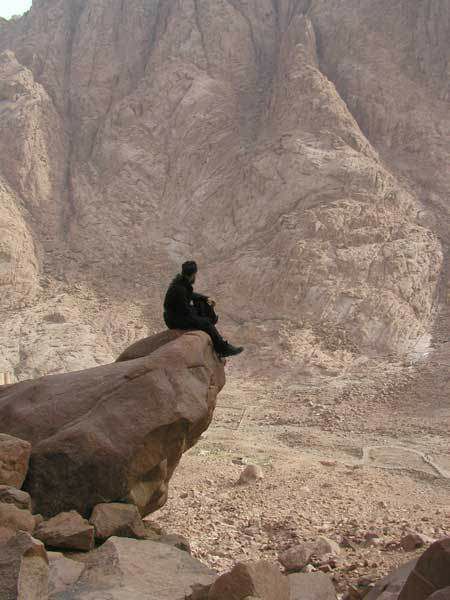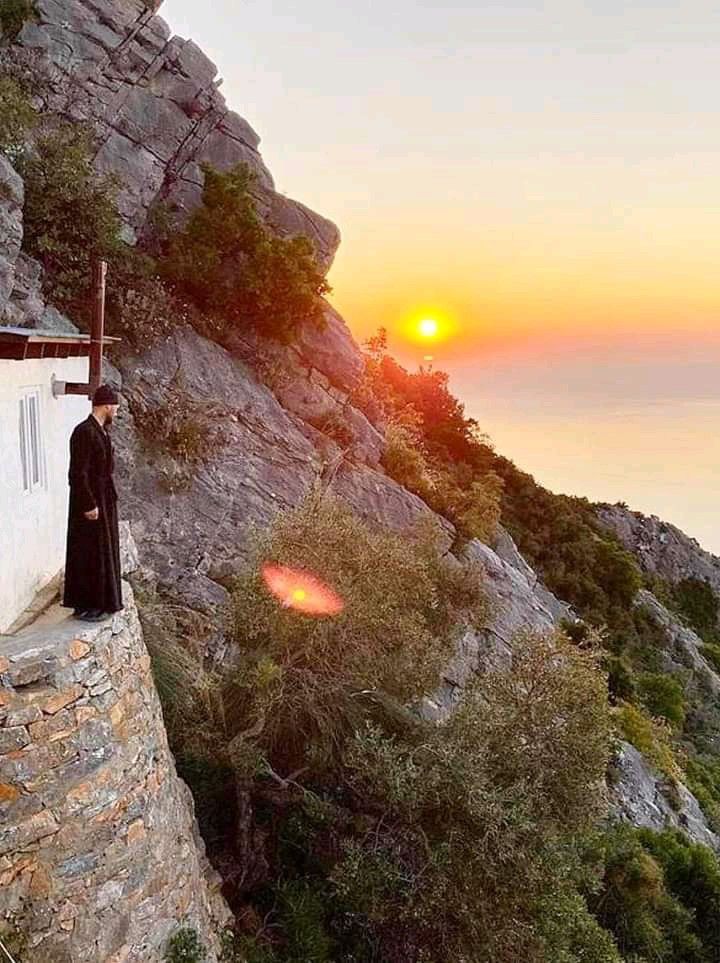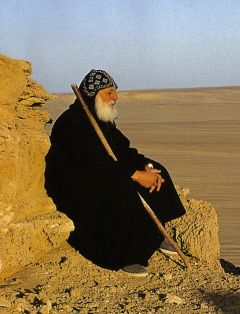ASCETICISM & HESCHYASM
The Silent Fight

In a world saturated with noise, images, and emergencies, it can seem almost absurd to speak of silence. And yet, this silence is not an absence: it is a presence. A reaching out toward God, a slow listening, a purification of the heart. In the Orthodox tradition, this quest has a name: hesychia , inner calm. Those who pursue it are called hesychasts .
The desert, the first place of silence
In Scripture, God always leads his servants into the desert: Moses, Elijah, John the Baptist, and Christ himself. Not to abandon them, but to transform them. The desert strips, isolates, and tires, but it purifies. Only what is essential remains. This exterior place gradually becomes an interior state : chosen solitude, slowed thought, an awakening heart.
The hesychast does not flee from the world: he learns to stand before God , even in the midst of tumult.

What is hesychasm?
Hesychasm is a spiritual path rooted in the Orthodox tradition , born in the Egyptian desert with the Desert Fathers, deepened at Mount Sinai and Mount Athos, and championed by figures such as St. Gregory Palamas.
The word comes from the Greek “hesychia,” which means peace, calm, silence . It is not simply a matter of remaining silent externally, but of leading the soul to a profound peace , far from the dispersion of thoughts and passions. It is a search for union with God in the silence of the heart , far from the noise of the world and inner turmoil.
Hesychasm involves three movements:
- purification of the heart through asceticism,
- the illumination of the intellect through prayer,
- and sometimes, deification , that is, participation in divine light (what tradition calls theosis).
This path often relies on the practice of the Jesus prayer :
“Lord Jesus Christ, Son of God, have mercy on me, a sinner.”
Repeated in silence, it anchors the soul, purifies thoughts, and refocuses the being on the Name. This prayer is not obligatory for being a hesychast, but it is a central tool .
🡒 To learn more about this prayer , read our article: The Prayer of Jesus
But hesychasm goes beyond technique . It is not a method of relaxation, nor a search for spiritual experiences. It is a path of stripping away , a fight against parasitic thoughts (the logismoi), a fidelity to silence, even when God seems absent.

Invisible asceticism
The world values efficiency, proof, action. The hesychast, on the other hand, advances in secrecy . He fasts not only from food, but from distractions, judgments, and useless curiosity. He learns to remain calm in times of trial, not to flee from dryness , to wait for God without forcing Him.
This fight is not seen. It is not shown. It is offered in silence .
A path for today?
Can we still live this path in our time?
Yes, but it cannot be decreed. It begins with small renunciations: talking less, consuming less, being less scattered. True prayer does not come from an effort of emotion, but from constant humility , even in doubt.
Hesychasm is less a technique than a call : God comes to those who remain.
“Keep your mind in hell and do not despair.”
- Saint Silouan the Athonite
This is, in essence, the hesychastic way: not to flee from the trial , not to demand God, but to wait for him in silence , with empty hands.